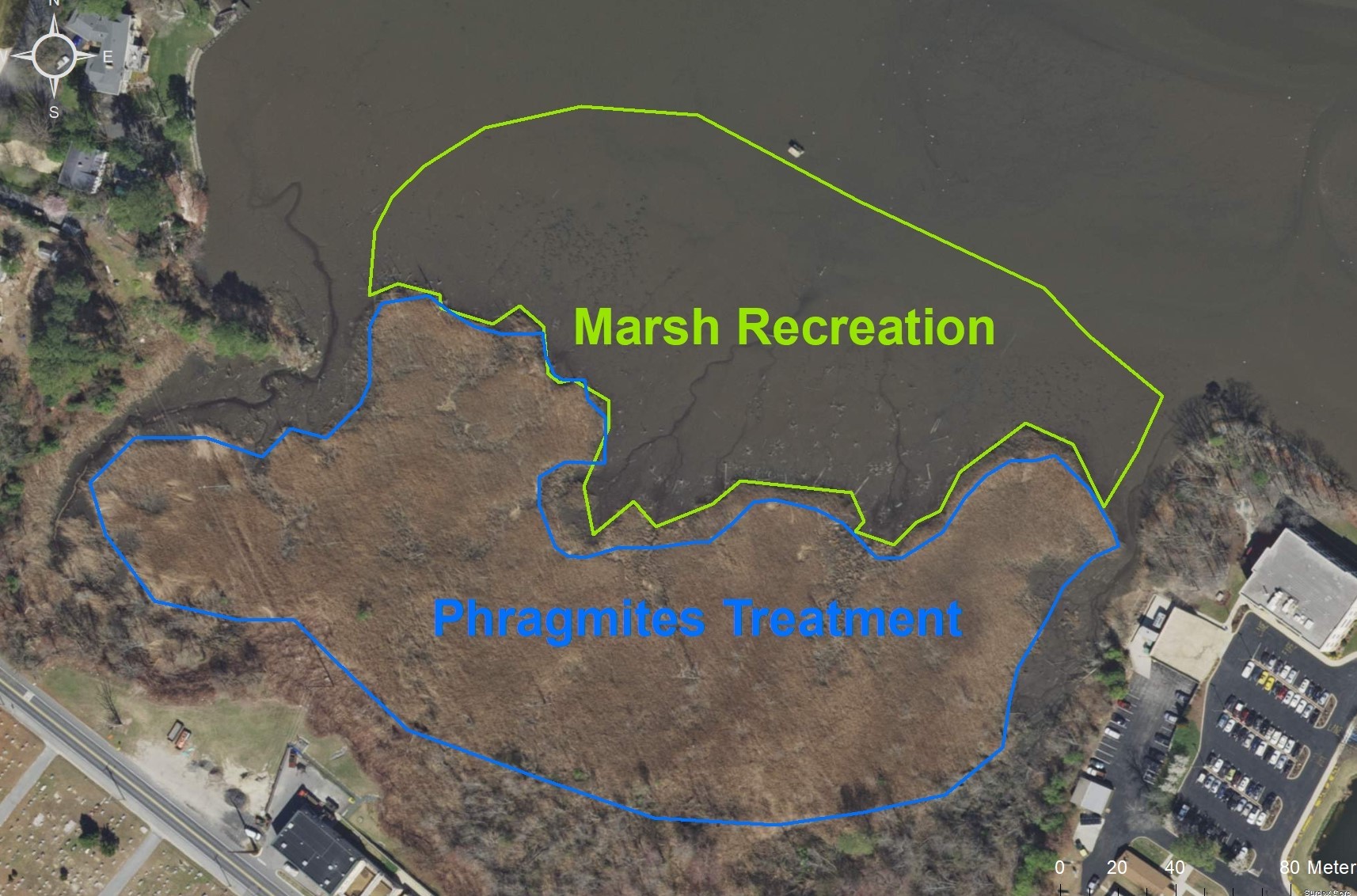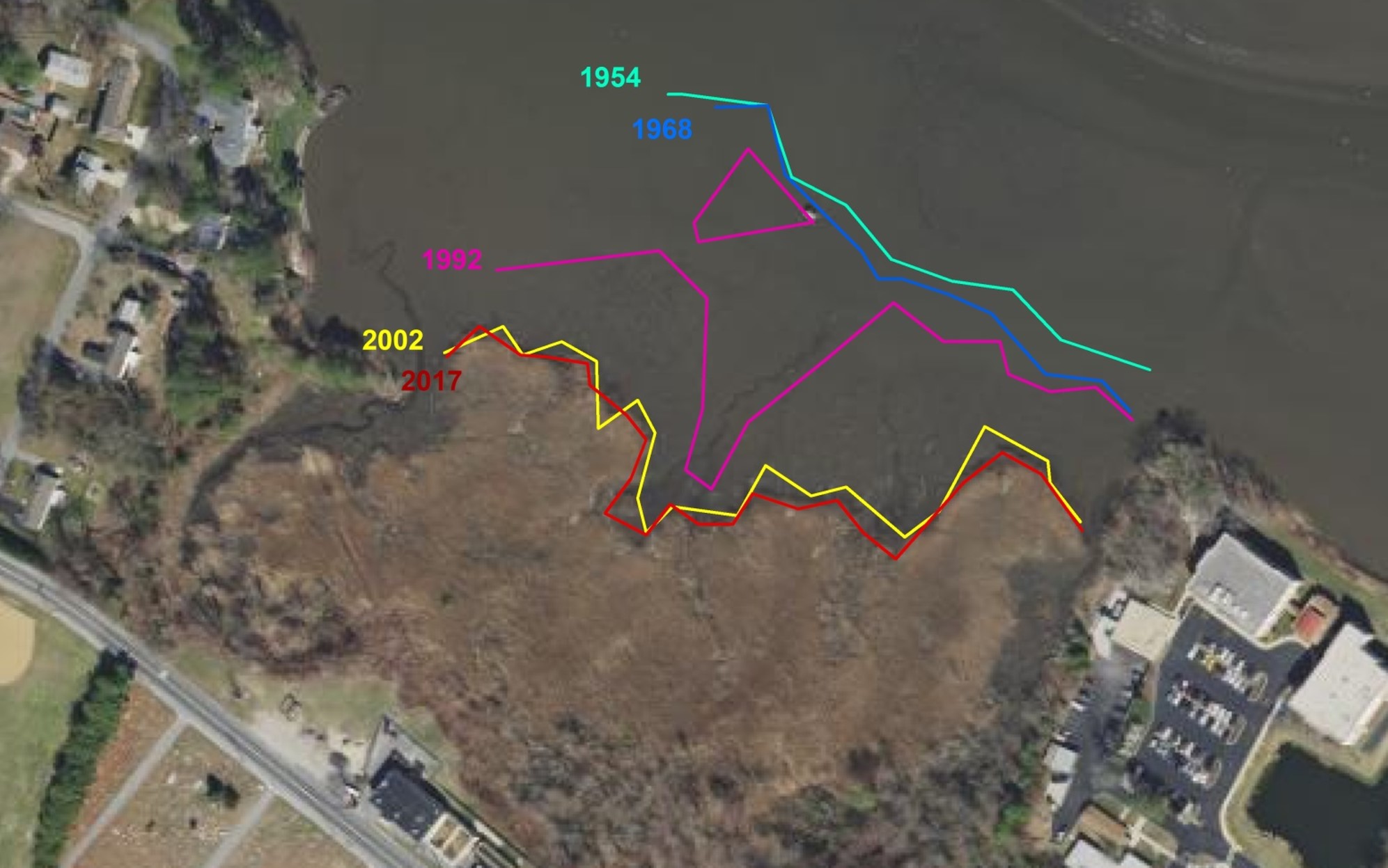Work is set to begin in the summer of 2024 on dredging the navigational channel along the Indian River, near Millsboro. The material dredged from the channel will be used in a marsh enhancement project to restore a local wetland area.
The project goals include maintaining a navigable waterway and wetland restoration.
This is a collaborative project, drawing on the expertise of two teams – the Wetland Monitoring and Assessment Program and the Shoreline and Waterway Management Section – in the DNREC Division of Watershed Stewardship.
The project area is in the Inland Bays region of Sussex County, located on the east side of the Town of Millsboro. The beneficial use project site can be found in the upper reaches of the Indian River, along pre-existing wetland property owned by the Town of Millsboro.
Since a previous dredging project in the Indian River in 2019, the channel in this area has decreased due to sedimentation and shoaling.

The dredging process will begin July 1, 2024 and continue until completed.
Work will occur Monday through Thursday. Access to channel will be extremely restricted.
Within the project area, there is limited access to the channel due to extreme shoaling. Boaters should be aware of the tides when navigating through this area. It is not advised to navigate this channel at low tide or during the dredging project.
This project is funded through DNREC appropriations in the fiscal year 2023 budget.
Traditional land disposal of dredged material is difficult to plan and maintain. The Division of Watershed Stewardship has researched alternatives for sediment placement.
Over the last several decades, beneficial use of dredge material has been investigated as a method to restore degraded or submerged tidal marshes.
Major goals of this project are to demonstrate techniques for using dredged material for wetland restoration, to improve navigability within the upper reaches of the Indian River, and to help build program capacity for future use of dredge material for environmental benefits.

DNREC’s Shoreline and Waterway Management Section uses a data-based method to prioritize dredging projects. It has identified the Indian River as a top priority for dredging. This method includes surveys of residents and users of the waterway, channel depth, boater safety and other environmental considerations.
Traditional maintenance dredging of the Indian River to maintain navigable channels requires the disposal of dredge materials in upland containment units which are limited by size and access.
As an alternative, DNREC will use dredged sediment as a resource to restore wetlands adjacent to the dredging area. Beneficial use of dredge material is a wetland restoration strategy that can help stabilize sensitive shorelines that ultimately reduce erosion and storm damage.
The project aims to remove up to 40 thousand cubic yards of sediment from Indian River over two years and to restore 15 acres of tidal wetlands on Town of Millsboro property through wetland recreation and invasive Phragmites treatment.

The project will restore native high marsh by treating invasive Phragmites (Phragmites australis). It will build a new marsh platform and recreate a former low marsh using dredged sediments from the upper reaches of the Indian River and seeding of native plants.
Once the project is complete, the restored wetland will be monitored for three to five years.
State and federal permits required for the project to restore wetland habitat using dredge material have been acquired.
DNREC has engaged Anchor QEA to provide engineering services and limited construction oversight.
The Town of Millsboro and private landowners are also supporting partners of the restoration project.
The goals of this project are to demonstrate techniques for using dredged material for wetland restoration and to improve navigability within the Indian River. This project will use lessons learned from DNREC’s beneficial reuse project at Piney Point, as well as lessons learned from projects in other states. Specifically, the project goal is to demonstrate how dredged material can be used to restore former wetland habitat that has become unvegetated and submerged.
Additional important goals of the Millsboro project are:
This project will provide multiple benefits.
For the Town of Millsboro:
Helping meet Delaware Wetland Management Plan goals:
The construction portion of the project must be completed by the end of February 2025.
Permits for the project specify specific time periods during which the work will not impact any vulnerable species. Work is restricted to only those times of year.
For more information on the project, please contact Kathleen Bergin at 302-855-7290.
Related Topics: dredging, marsh restoration, navigation, phragmites, watershed stewardship, waterway management, wetlands